Using Playback Technologies to Associate Music With Personal Identity: Nick and Norah’s Infinite Playlist
McNelis and Boschi state that ‘visible playback technology has had various functions throughout the history of film, and its’ presence has influenced construction’s of identity’ (89). With this quote in mind I would like to discuss the various playback technologies featured in the film Nick and Norah’s Infinite Playlist. In this blog post I will explore how these playback technologies signify Nick and Norah’s sense of personal identity and how this is closely tied to their ‘authenticity’ as music fans. Focusing specifically on the representation of record players, mix CDs and IPods I would like to argue that the film uses playback technologies to shape Nick and Norah’s character identities and through this defines them as ‘authentic music fans’. Nick and Norah’s Infinite Playlist revolves around Nick, a heartbroken teenager who spends his time making sad mix CDs for his ex girlfriend, Trish. Nick meets Norah at a gig where she asks him to ‘pretend to be her boyfriend for 5 minutes’. The two teens end up spending the night driving around New York City together looking for a band called ‘Where’s Fluffy’. During this time Nick and Norah bond over songs and albums that they both love. Firstly I’d like to talk about what it means to be an ‘authentic’ music fan. Being ‘authentic’ means to be genuine and to share a sense of actuality. In addition to being ‘authentic’ can suggest a sense of authority or wisdom. In terms of identifying as an ‘authentic music fan’ it is likely that one must possess a significant amount of ‘cultural capital’ or knowledge of music as well as associating music with one’s personal identity. From this perspective I think it is safe to say that Nick and Norah fit clearly into this category with most of their conversations revolve around music or the knowledge of music. Both of them demonstrate a high level of ‘literacy’ when it comes to using playback technologies that appear throughout the film and this supports their authenticity and expertise.
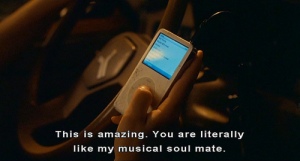
In the beginning of the film we see that Nick is listening to records in his room. Collecting records and utilising record players is a marker of authenticity as it indicates Nick’s interest in older music and in respect for traditional playback technologies. McNelis and Boschi explain that record players and masculinity are often an indicator of an ‘obsessive hoarder’ (90). However, I think men who owns a record player in a film could also be an indicator of ‘male sensitivity’. If we look at examples from High Fidelity and The Virgin Suicides one could say that all these guys are emotionally sensitive. Maybe a better way of putting this is to say that these men are emotionally authentic via their record players. In the opening scene of Nick and Norah’s Infinite Playlist we see Nick listening to records and leaving a sad message on Trish’s phone. These examples begin to show that record players indicate a fusion of personal identity, emotion and musical preference, thus associating ones authenticity as an individual with music begins to suggest an overall authenticity of music fandom. https://www.youtube.com/watch?v=X2YdsIm2Pj8 (Boys communicate their feelings via records) https://www.youtube.com/watch?v=E8L8JFWY8cc (John Cusack listening to records and sulking)
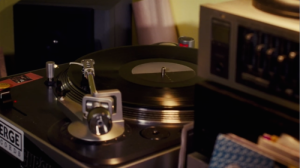
Nick’s obsession with making mixed CDs to express himself is important as these can be considered a ‘labour of love’ much like making music itself. While Nick has the option to easily create digital playlists using MP3 files he instead chooses to curate a mix of tracks to a CD, often recording his own messages or songs onto the album– adding his own original or authentic element to the mix. Drew describes mix tapes as being associated with a sense of ‘nostalgia’; he also adds that there is an element of ‘interpersonal meaningfulness of authentic, homemade mixes’ (534). Mix CDs (as a playback technology) signify a personal, emotional and authentic side to Nick’s character. Much the same as ‘homemade’ or live music signifies the authenticity of a musician; it also signifies the authenticity of a fan. To add to this Nick also spends time carefully hand drawing the album artwork and then naming the mixes accordingly. For example, ‘Road To Closure Vol. 12’ indicates Nick’s high level of musical knowledge (or ‘cultural capital’), as he is able to curate playlists that accurately portray his thoughts and feelings (personal identity). Nick also appreciates the experience of a full album rather than just listening to singles, which signifies a more ‘nostalgic’ or ‘authentic way of listening to music.
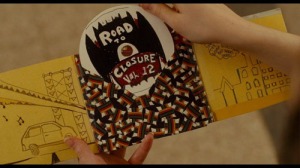
When we see Norah for the first time she is listening to music on her IPod. Norah jokingly tells her best friend not to interrupt her while she is listening because she is ‘in her zone’. This suggests that Norah is particular about her taste in music and considers the music she chooses to be personal to her. Bull states that listening to mobile music creates ‘meaningful spaces associated with any individual’s personal narrative’ (347). Considering Norah’s IPod as a signifier of her personal narrative we can see how Norah would associate music with her personal identity.
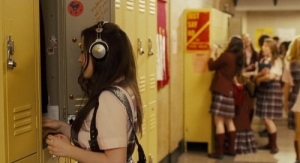
Both Norah and Nick’s sense of authenticity is based on the fact that they have niche taste in music and that is important to both of them on a personal level. Later in the film, we see Norah looking through Nick’s IPod. Norah exclaims ‘you’re literally like my musical soul mate’. The IPod acts as an indicator of intimacy and personal bonding between Nick and Norah. Sometimes it seems like being an ‘authentic fan’ is something one has to prove in order to be deemed ‘authentic’ by others. It is almost competitive in this sense– asserting your own ‘cultural capital’ over someone else to prove you are more authentic. Do Nick and Norah only like each other because they have the same taste in music? Perhaps their interest in one another is actually based in narcissism? ![]() Anyway, Norah takes Nick to her father’s recording studio. Nick deeply appreciates being shown around the studio and is amazed when he gets to use the same recording/playback technology as some of his favourite bands. In this scene Norah states that she has a job at the record company if she wants it and articulates that she is unsure about taking it because it might ‘make her not love music in the same way’. This alludes to the prospect of ‘selling out’ or that Norah is personally concerned about ‘selling out’ in terms of becoming a part of the business side of music rather than just enjoying it on a personal level. This concept is important in terms of authenticity and personal identity as ‘selling out’ in favour of being a part of the ‘music business’ can be considered ‘inauthentic’ as it suggests one is interested in money rather than music. Just as a side note. Did anyone spot this Devandra Banhart cameo? (I didn’t) I thought this was meant as kind of an ‘in joke’ in the film, as in ‘did you (the viewer) recognise Devendra Banhart… if you didn’t can you even call yourself a ‘real’ fan?
Anyway, Norah takes Nick to her father’s recording studio. Nick deeply appreciates being shown around the studio and is amazed when he gets to use the same recording/playback technology as some of his favourite bands. In this scene Norah states that she has a job at the record company if she wants it and articulates that she is unsure about taking it because it might ‘make her not love music in the same way’. This alludes to the prospect of ‘selling out’ or that Norah is personally concerned about ‘selling out’ in terms of becoming a part of the business side of music rather than just enjoying it on a personal level. This concept is important in terms of authenticity and personal identity as ‘selling out’ in favour of being a part of the ‘music business’ can be considered ‘inauthentic’ as it suggests one is interested in money rather than music. Just as a side note. Did anyone spot this Devandra Banhart cameo? (I didn’t) I thought this was meant as kind of an ‘in joke’ in the film, as in ‘did you (the viewer) recognise Devendra Banhart… if you didn’t can you even call yourself a ‘real’ fan?
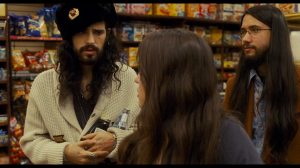
https://www.youtube.com/watch?v=PMXaCXkP6AA Devandra Banhart- Lover (theme song of Nick and Norah’s Infinite playlist)
Further Links
http://andrewvs.blogs.com/files/music-stereotypes-among-college-students.pdf
References
Bull, Michael. No Dead Air! The iPod and the Culture of Mobile Listening. Leisure Studies, 2005, Vol.24(4), pp.343-355
Drew, Rob. Mixed blessings: The commercial mix and the future of music aggregation. Popular Music and Society, 2005, Vol.28(4), pp.533-551
Marta García Quiñones, Anahid Kassabian and Elena Boschi. Farnham: Ashgate, 2014. 89-106.
McNelis, Tim and Boschi, Elena. Seen and Heard: Visible Playback Technology in Film: Ubiquitous Musics: The Everyday Sounds That We Don’t Always Notice. Eds.